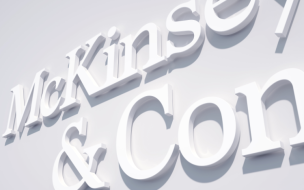A return on your MBA tuition has never been more important. Business school candidates take months out of work and spend upwards of $100,000 on a top MBA degree.
Yet it is the lower-profile schools that will provide the best value for your cash. HEC Paris tops the new list. It is considered the best value MBA world-wide. HEC, while prestigious, is smaller than the Ivy League American institutions.
Graduates of the French school make enough extra money to pay off their degrees in less than two years. An HEC MBA costs about $60,000. Students enrol while earning less than $50,000 on average. But average post-MBA salaries are nearly $124,000.
An Aston Business School MBA degree also pays dividends. The UK-based school comes second in The Economist’s ranking. Aston students are netting nearly 65% of their tuition within a year of graduation.
United States-based schools dominate traditional MBA rankings. They are also the most expensive. An MBA at Wharton, considered a top-five school, costs $330,000 on average. Wharton often enrols well-paid executives. Stanford, another top US school, has a yearly tuition fee of nearly $120,000. All of the top-ten most expensive MBA courses are based in the States.
Programs in the US are also longer than most European programs.
Yet the immediate return on investment is tiny. US MBAs land jobs that are just a few notches above their previous careers. An MBA from Harvard Business School offers less than a $10,000 increase in immediate post-MBA salary, according to the data.
Cheaper, shorter MBA programs around the world offer better returns. IESE Business School in Spain, for example, admits candidates from poor countries who go on to bank lucrative jobs in the West. MBAs from the University of Hong Kong similarly see a 60% return on their investment within a year of graduating.
Other schools considered top-20 for value include Italy's SDA Bocconi, Grenoble GSB of France, ESADE Business School in Spain and Melbourne Business School, based in Australia.
SDA Bocconi graduates increase their salaries by nearly $60,000, earning about $108,000 in their first year post-MBA. The school, which is considered one of Italy’s best, produces MBAs who bank 55% of their tuition within 12 months of leaving campus.
However, it is not just return on investment that will attract business leaders to MBA programs. Candidates will still have to consider a range of other factors. Career transition, intended industry post-MBA and geographical location are all important considerations in candidates’ choices.
While Wharton’s is the most expensive program, the school’s MBAs are more likely to climb the corporate ladder in the long-run.
To see the full list of business schools’ value for money, visit: http://www.economist.com/news/business/21601884-payback-time
RECAPTHA :
7e
99
41
31








